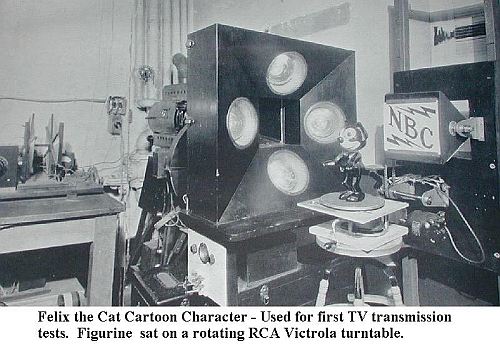There has been an incredible amount of hype about HD TV, but few bother to explain exactly what it means. I get the feeling "they" want to keep us confused so "they" can sell us whatever "they" can push on us.
HD essentially means High Definition. All by itself that term means little, High Definition compared to what. In the case of TV, it's supposed to compare new TVs to what we had before, being the older analogue style TV's.
However, in the case of webcams, the term is very misleading. What the makers are saying is an HD webcam can shoot an image in the format of HD TV, (16:9 aspect ratio) not necessarily that it is a higher resolution than last year's webcams. In fact, HD format is actually somewhat lower resolution than some of the cameras I have reviewed lately.
One thing that makes all this confusing is there are actually 18 different digital formats specified by the ATSC (Advanced Television Systems Committee, the people who set the standards for TV).
Here is one thing which is irrelerent to webcams, but I would like to explain anyway, because I havn't found a good explanation elsewhere, is the difference between 1080i and 1080p.

Television was first developed back in the late 1920's (yup it's actually been that long, but TV wasn't practical for the mass public until the late 1940's). The designers had to develop a system to get around a number of technical problems with the mechanics of the display system of the time, the way the human eye works, and some other very complicated issues. Not to get into too much detail, what they came up with was refered to as "Interlaced display". What this means is the picture is drawn on the TV tube line 1, followed by line 3, then line 5, etc to the bottom, then back to draw line 2, then line 4 and so forth. This is the same system as used in 1080i (the i stands for Interlaced).
The other method of displaying an image is refereed to as Progressive (the p in 1080p) where line 1 is drawn, then line 2, then 3, then 4 and so on to the bottom. In both of these scenarios the entire image is drawn between 24 to 60 times a second (the refresh rate you may see on TV or computer monitor specifications).
Back to our subject. Of the 6 formats defined for HD TV there are actually only 2 resolutions involved. (the others deal with different refresh rates of the same 2 resolutions) The resolution is the number of pixels or dots that make up the image. If you look at your TV or computer screen with a magnifying glass, you can see the dots that make up the image. Each dot is refereed to as a pixel. There are actually 3 dots making up each pixel, one each of red, green and blue. But we refer to all three as being one pixel.
TV sets, computer monitors and digital cameras (including webcams) are classified by resolution, the number of pixels across by the number of pixels down.
By the way, another spec you may hear about says these resolutions have an "aspect ratio" of 16:9, meaning width divided by height displyed in a fraction of the lowest common denominator (16/9)
Just for comparison the old TVs had a resolution of about 640 pixels wide by 480 pixels high, however better sets could produce a higher horizontal resolution. In computers this is refereed to as VGA (Video Graphics Array), with an aspect ratio of 4:3.
To get the total number of pixels in your digital or web camera, multiply the horizontal by the vertical.
1,920 x 1,080 = 2,073,600 = ~2 mega pixels
1,280 x 720 = 921,600 = ~1 mega pixel
Notice the 1080 and 720.
The trick on calling a camera HD is they could be referring to the 720 rather than a 1080 and they can still get away with calling it HD, so don't just look at the front of the box. Make sure you check the specs carefully so you know exactly what you are getting. Then again, since HD is not a regulated specification relating to webcams, some import cameras could have any resolution and they could still call it HD. I don't expect to see such deceptions from our major camera manufactures such as Logitech or Microsoft, but keep your eyes open.
Also remember that if your camera is set for the large HD resolution (1920x1080) it is very unlikely, with current cameras and computers, that your USB buss will be able to carry a 30 frame per second video stream.
I've been a bit negative in this article because I am on my soap box about deceptive advertising I have encountered over the last few days. I have been looking for a heavy duty switch to put on an electric heater cord. I have found the so called heavy duty switches currently being sold everywhere, can only carry half the load (3 amps) of the standard switches (6 amps) which cost less. I can't use a standard switch because it won't fit on the cord. The only thing that could be considered heavy duty is the entire thing, switch and housing, are bigger than a standard switch.